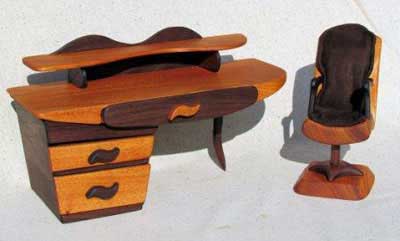
Here's My Woodworking!
by Ramon Gibbs
Cincinnati, OH
Click on any picture to see a larger version.
Wood always offers traditional warmth, charm, functionality, rich sophistication and even investment.
It is no wonder that we stand in awe of these timeless staples when they share truly exquisite and masterful creativity with an ultimate perfection.
As a wood artist I create one of a kind originals that embrace passion, passion that takes you to places of yesteryears past, or enchanted by the yearning fantasies of tomorrow.
I have read books and articles on building scaled down furniture that left me in the dark. So I devised an easy system that seems to work for me.
All my reproductions are 1/5 to 1/6 actual sizes emphasizing (NOMINAL) to the final size which allows me to make adjustments to all scaling I do.
It is a relatively easy process and many times I start with just one number.
Using a standard dresser as an example:
A = 29”
B = 36”
C = 18”
To make this 1/5 the size I would change the numbers to:
A = 30”
B = 35”
C = 20”
Then divide each number by 5, and then numbers then become:
A = 6”
B = 7”
C = 4”
This gives me an approximate 1/5 scale, but I always cut conservative and make adjustments as I go. Be patient with yourself understanding that this is not a pattern you are following, but rather one you are designing as you proceed.
Always cut as few pieces as possible and cut-to-fit as you go, making allowances for scaling down. Often complicated joints can be altered to a simple butt joint and instead of screws simply apply glue lightly, allow to tack-up, then press together. Wedge shapes make perfect reinforcements when needed in hidden areas. Handles and pull-knobs can be custom made using contrasting wood that give the finished project a more professional finish.
Tips:
Keep quality sharp blades in your machines, and have various sizes for the type job needed with back-ups when possible.
Try to keep your parts cuts to the nearest 1/8 to 1/4 mark and make adjustments as you go to the outer part, dry fitting often.
I use butt joints on most panels, drawers and doors because I usually cut them 1/8” thick.
I use the Tight Bond Instant Glue w/ Activator or similar or the Tight Bond III applying it with a tooth pick.
Linseed Oil adds a rich finish, followed by a protective poly if you like.
One of my many mentors once said: professionals and masters make mistakes too, they just get good at correcting them.
Don't be afraid to try this easy approach, and as often as possible be conservative with your cuts so adjustments can be made if needed.
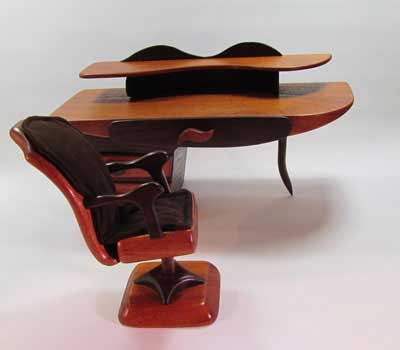
This jewelry box is a scaled down desk, constructed of mahogany and walnut. It has suede-lined drawers and a matching chair with suede cushioned pad. The "s"-shaped pull knobs are turned sideways. The top and desk drawer has a walnut face with contrasting mahogany pull handle. The desk is supported on the right with a post style leg also made of walnut. No, the chair doesn't swivel but the three drawers are fully functional.
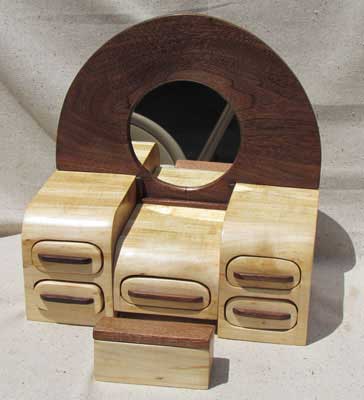
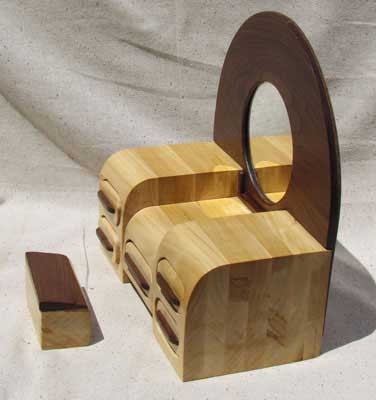
This was modeled after an actual antique Art Deco Waterfall vanity. Made from walnut and ambrosia maple woods, its features include large Walnut wood panel with mirror, elegant nostalgic "waterfall edges", five contrasting pull handles and a contrasting stool that has a compartment under the lid.
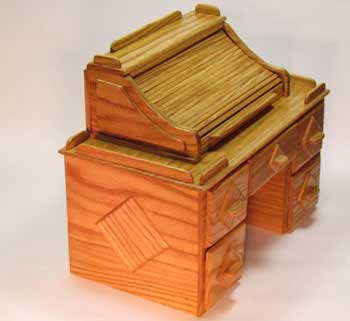
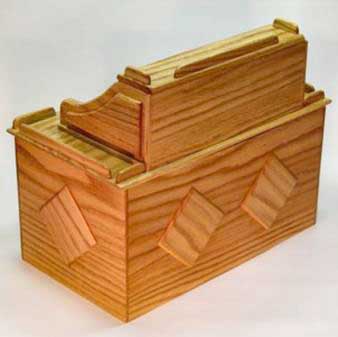
The "Roll Top Desk" is made completely of white oak and features an authentic roll top hutch, six pigeon holes, oak diamond on-lays, and five drawers with removable black suede lining.
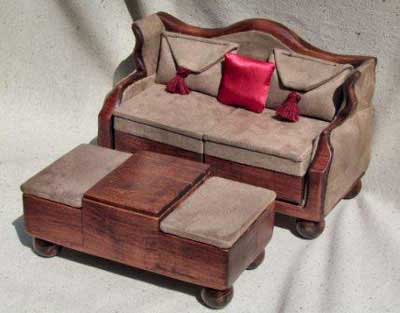
This is my version of a scaled down wing arm sofa with camel back, bun feet and ottoman. Upholstered in cream suede. The wood is actually wormy maple stained with a red mahogany.
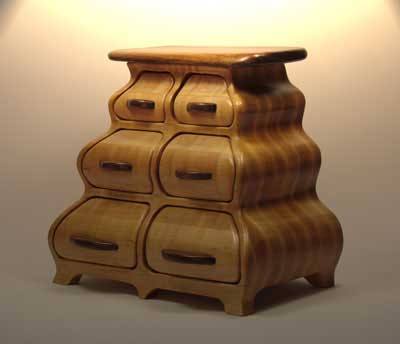
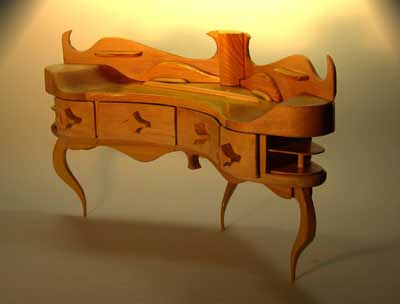
You can email Ramon at
ramon@rdc513.com
or look at his website at
www.rdc513.com
.
Would you like to see your woodworking in this column? We invite you to
SEND US PHOTOS
of your favorite woodworking projects along with captions and a brief history of your woodworking.
(Email photos at 800x600 resolution.) Receive a $50 store gift card if we show your stuff in a future issue.
Return to
Wood News
front page

